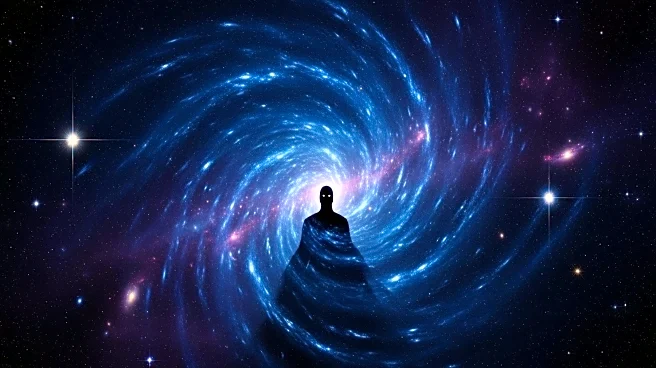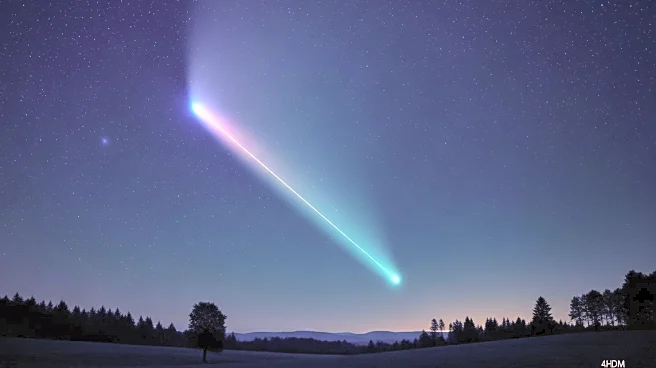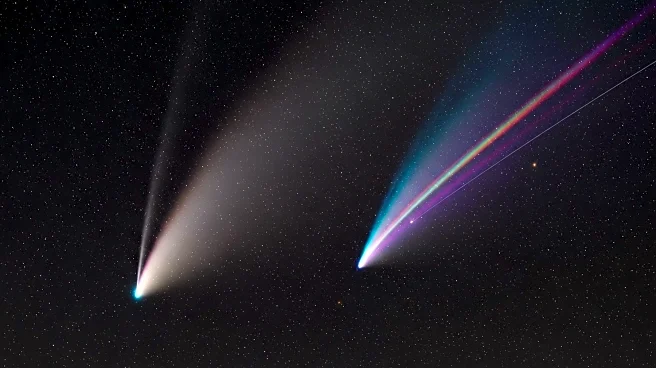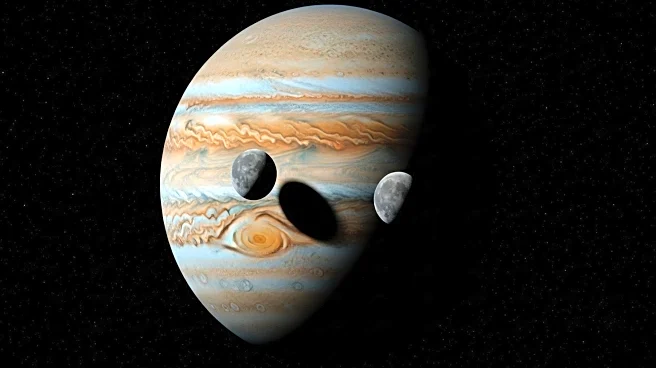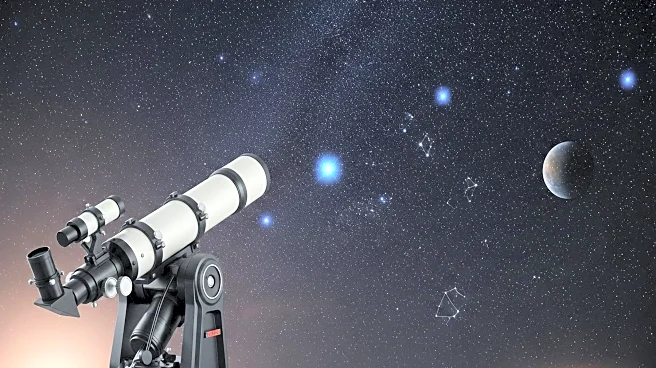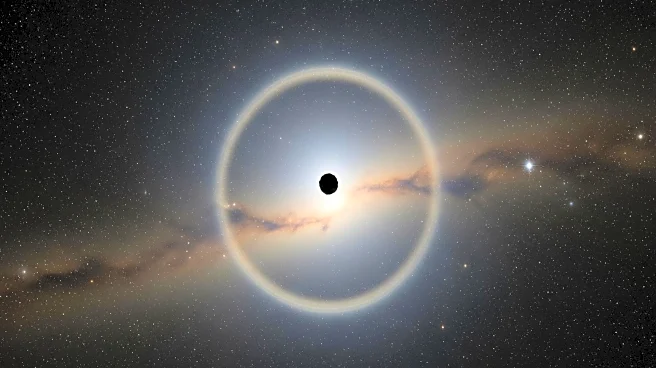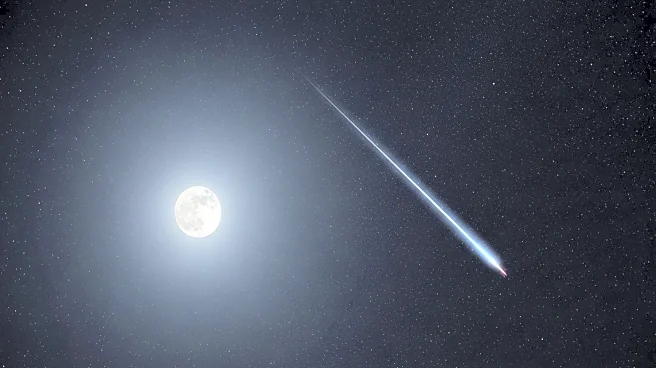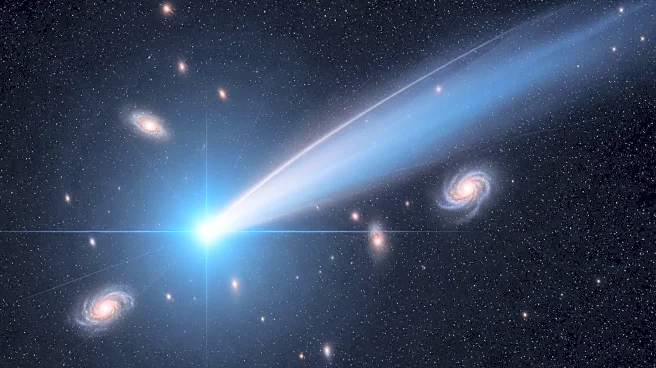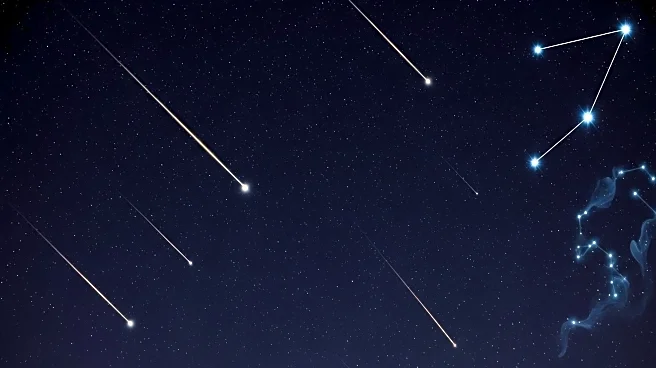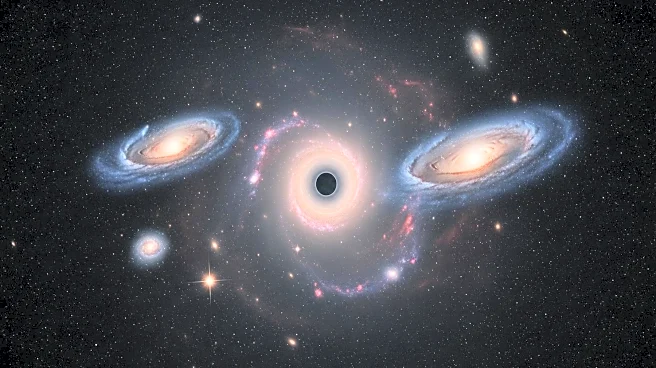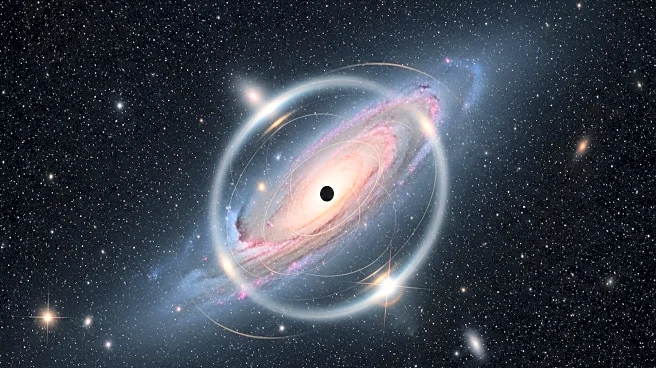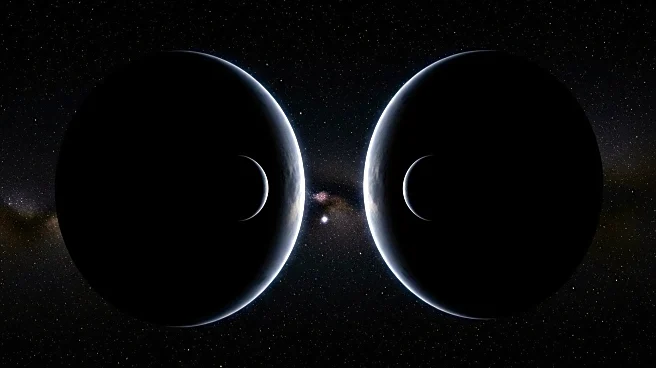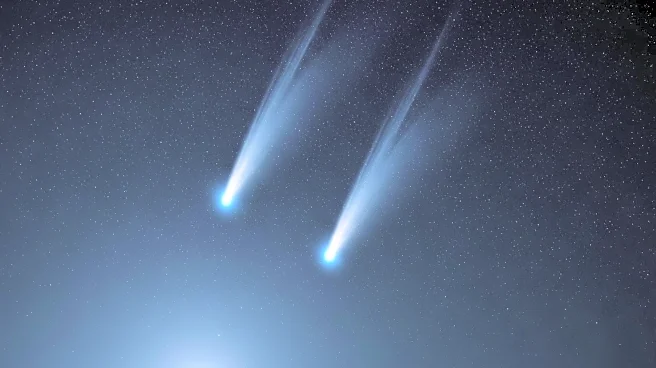What is the story about?
What's Happening?
Astronomers have provided new insights into the massive black hole located at the center of the Milky Way galaxy. Despite its significant size, equivalent to about 4.5 million Suns, this black hole remains obscured from direct observation due to thick clouds of gas and dust. By analyzing the orbits of stars near the galaxy's center, scientists have been able to estimate the black hole's mass. The galactic center can be indirectly observed by looking towards the constellation Sagittarius, specifically near the teapot asterism. This area is visible above the south-southwestern horizon during evening hours. Additionally, the Orionid meteor shower, resulting from Earth's collision with remnants of Halley's Comet, is set to peak on October 21, offering a celestial spectacle visible from early October to early November.
Why It's Important?
Understanding the characteristics and behavior of the Milky Way's central black hole is crucial for astrophysics, as it provides insights into the dynamics of our galaxy. The ability to estimate the mass of such a massive celestial object helps scientists refine models of galactic formation and evolution. The Orionid meteor shower, linked to Halley's Comet, offers a unique opportunity for public engagement with astronomy, fostering interest and education in space sciences. These events highlight the importance of continued observation and study of celestial phenomena, which can lead to advancements in technology and scientific knowledge.
What's Next?
As astronomers continue to study the Milky Way's black hole, further observations may reveal more about its influence on surrounding stars and the galaxy's structure. The upcoming peak of the Orionid meteor shower will likely attract amateur astronomers and enthusiasts, encouraging public participation in skywatching events. Future research may focus on capturing more detailed images of the black hole using advanced telescopes and imaging techniques, potentially unveiling new aspects of its behavior and properties.
Beyond the Headlines
The study of black holes, such as the one at the Milky Way's center, raises intriguing questions about the nature of gravity and spacetime. These cosmic phenomena challenge our understanding of physics and may lead to breakthroughs in theoretical models. The cultural impact of events like meteor showers can inspire artistic and literary interpretations, enriching human appreciation of the universe. Additionally, the ethical considerations of space exploration and observation continue to evolve as technology advances, prompting discussions on the responsible use of resources and the preservation of celestial environments.
AI Generated Content
Do you find this article useful?
